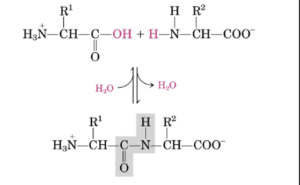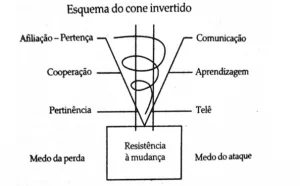REVIEW ARTICLE
RIBEIRO, Thayanne Mayul de Souza Borges [1]
RIBEIRO, Thayanne Mayul de Souza Borges. Munchausen and Munchausen syndromes by Proxy: some notes from Psychology. Revista Científica Multidisciplinar Núcleo do Conhecimento. Year 05, Ed. 05, Vol. 09, pp. 90-98. May 2020. ISSN: 2448-0959, Access link: https://www.nucleodoconhecimento.com.br/psychology/munchausen-syndromes, DOI: 10.32749/nucleodoconhecimento.com.br/psychology/munchausen-syndromes
SUMMARY
The article aims to present some notes of psychology about Munchausen syndromes (MS) and Munchausen by Proxy (SMPP), seeking to understand the terms and symptoms. And, later, provide subsidies to health professionals for a possible intervention and treatment. From a review of the literature, through consultation of electronic data and published books available, prioritizing the texts from 1999 to 2019 on the subject. It is observed that the literature points to Munchausen Syndrome as a more common pathology than is diagnosed affecting well-informed individuals about the medication to be used for the treatment of the disease they believe they have. While in Munchausen Syndrome by Proxy the victims are children usually taken to the health service by their mothers or guardians. Improvement in care becomes essential, especially when the victim is the child.
Keywords: Munchausen syndrome, symptoms, Munchausen syndrome by proxy.
INTRODUCTION
The Baron of Muchausen was a German military man who participated in the war against the Turks in the mid-18th century, became a figure known for wandering the cities, telling fanciful stories of impossible deeds. The English physician Richard Ascher paid tribute to this character by using the term Munchausen Syndrome to designate a psychiatric disorder.
An important characteristic observed in these patients in relation to the disorder their reluctance to perform psychological treatment after hospital discharge. When confronted with this possibility there is an intensification of the signs and symptoms presented. It is difficult to understand the reasons why these individuals develop this condition, especially when the simulation of symptoms occurs with a child, and is produced by his own mother, precisely the one who should be responsible for the care and protection of the child. It is believed that the intention is to benefit from the care provided by the health team for the supposed disease presented by the child (PIRES and MOLLE, 1999).
The research was guided by the following question: how should be the attitude adopted by professionals in the face of a case of Munchausen Syndrome, especially when the victim is a child and the mother or responsible for her care is the person who produces the disease, assuming it indirectly by proxy.
The theme is scientifically relevant, because currently there are few studies related to the subject, rarely addressed in the curricula of health professionals. Professionals find it difficult to diagnose the syndromes, among other factors, due to the little knowledge that is available about them, due to a scarce literature on the subject. In addition, many patients deny the existence of a psychiatric disease, in addition to the perpetrator’s attitude of denying any type of accusation, in cases of Munchausen Syndrome by Proxy. It is essential to understand the signs and symptoms related to the syndromes, knowing the characteristics of those involved and the mechanisms used in the simulation, in order to provide subsidies for health professionals in the recognition of these pathologies for a possible intervention and more appropriate treatment.
CONCEPTUALIZATION AND CHARACTERIZATION OF MUNCHAUSEN SYNDROME
According to Oliveira (2018) Munchausen syndrome was first mentioned in 1951 by the English physician Richard Ascher who presented the term inspired by the Baron of Münchhausen, Karl Friedrich Hieronymus, who lived in Hanover, Germany in the 18th century. Braga (2007) cites Penna (1992) when emphasizing that the disease is called Munchausen Syndrome (MS), because, like the Baron, patients roam hospitals in hospitals, telling factitious stories about diseases, creating symptoms in order to capture the attention of the medical team.
The English physician Ascher coined the term Munchausen Syndrome to characterize a psychiatric disorder that causes the individual to intentionally create fanciful health stories (NETO et al., 2017). Currently for diagnosis and probable treatment, it is considered that simulated complaints usually affect different organs or vary in the course of the disease.
The International Statistical Classification of Diseases and Related Health Problems (ICD-10) is within the Group Other personality and adult behavior disorders (F68 present within fictitious disorders). Characterized by recurrent simulation and manipulation of symptoms, sometimes with self-mutilation. In order to cause signs and symptoms that resemble a pathology. The motivation is intrinsic and aims to assume the role of patient to receive medical treatment. It is often associated with major personality and relationship disorders.
The Diagnostic and Statistical Manual of Mental Disorders (DSM-5) classifies it as a factitious disorder imposed on itself. The diagnostic criteria are: A. the subject simulates psychological and physical signs, producing lesions or diseases; factitious disorder B. acts as an incapable or injured patient; C. takes fraudulent behaviour even in the absence of clear external compensation; D. this behavior is not clarified by the disorder, similar to a delirium or other specific psychotic condition; Recurrent episodes many disease simulation events and/or injury induction (NETO et al., 2017).
Aranha et al. (2007) emphasizes that factidium disorder is characterized by the production of symptoms by the patient on purpose, whose objective is to assume the role of patient and, thus, gain attention from the medical team. Patients are placed in high-risk situations, such as recurrent skin infections due to stool contamination, unplained and recurrent hypoglycemia in patients with insulin access, fever of undetermined causes, or misuse of prescribed medications.
The authors mentioned above point out an important characteristic observed in these patients in relation to the disorder to their reluctance to perform psychological treatment isolated from hospital discharge. When confronted with this possibility there is an intensification of the signs and symptoms presented, many present strongly manipulative traits, in order to control the situation, even dealing with experienced and competent professionals. When they cannot control the situation they try to escape the service, and stop attending the hospital where they were being followed, they then seek another (ARANHA et al., 2007).
The thoughts, feelings or excessive behaviors that the subject presents are accompanied by a number of somatic symptoms, whose characteristics are: exaggerated and recurrent thoughts about the severity of symptoms; height of anxiety about one’s own health or symptoms; increase in time and energy focused on symptoms or health problems (ARAÚJO and NETO, 2014).
CONCEPTUALIZATION AND CHARACTERIZATION OF MUNCHAUSEN SYNDROME BY PROXY
Gueller (2009) mentions that in 1977 Meadow named Munchausen Syndrome by proxy (SMPP) as a condition in which parents or guardians create or simulate symptoms of diseases in children. This results in numerous dangerous medical interventions and procedures. The perpetrator apparently demonstrates exacerbated interest and involvement in child care. Nevertheless, it is responsible for producing the disease by assuming it indirectly by proxy.
According to the DSM-5 the diagnosis of Munchausen Syndrome by Proxy is a factitious disorder is seen as that imposed on the other. The diagnosis is related to the aggressor and not the victim, since he/she receives a diagnosis of abuse (DSMV, 2014). However, the determination attributed to this entity and the diagnostic criteria generate controversy in the scientific environment. The characteristics assumed by the perpetrator when assuming the disease indirectly by proxy are to exacerbate symptoms, falsify or produce clinical histories, laboratory evidence, physical injuries, besides inducing hospitalizations with risky therapeutic procedures (PIRES and MOLLE, 1999).
DIAGNOSIS AND MANAGEMENT OF SYNDROMES
Diagnosis is made from an anamnesis and cautious physical examination. Data brought by family members and other medical reports become essential. The relevant differential diagnosis is the presence of a true physical disease. (GATTAZ et al., 2003). Many deny the existence of a psychiatric disease. When the simulation is discovered and the hypothesis of a physical illness is discarded the feeling of care initially released by the hospital staff is replaced by a feeling of failure and rejection often associated with feelings of anger, frustration.
Aranha et al. (2007) reaffirm that feelings tend to arouse a negative transference in the health team when the factitious nature of the disease is evidenced. There is difficulty in characterizing what motivates these patients to act in this way. They are believed to be in search of something like acceptance and affection. These feelings may have originated in the relationship established with the parents, and in some way it is transferred to health professionals. The recommended approach is not to confront the patient, offering them measures that enable their recovery. And involving it in the treatment plan (GATTAZ, 2003).
The fundamental strategy in the management of these patients is early diagnosis, according to Aranha et al. (2007), in order to prevent an increase in suffering and the risk of unnecessary self-injury and examination. In early stages of the disease, a psychiatric intervention tends to be successful, in addition to an auxiliary psychotherapy in strengthening identity and self-esteem.
It is essential to establish a therapeutic bond with the patient. Powell and Boast (1993) cited by Gattaz et al. (2003) pointed to Cognitive Behavioral Therapy as one of the approaches to manage this syndrome. Proposing the training of social skills and psychoeducation. The objective of the first is to provide a diversified repertoire of functional social behavior so that the subject can emit more assertive behaviors in interpersonal relationships by expressing better feelings, opinions always respecting others. The second seeks to motivate the individual for treatment through clarification of symptoms and cognitive model, sharing cognitive conceptualization.
However, there is no consensus on the best therapeutic approach to be adopted for the treatment of Munchausen syndrome (ARANHA et al., 2007)., The use of antidepressant, neuroleptic and anxiolytic medications reduce anxiety, and has shown satisfactory results when used (GATTAZ et al., 2003).
Munchausen Syndrome by Proxy is a pathology considered as a serious form of child violence, since the child presents false pathological conditions, produced by one of his guardians, usually the mother. It is necessary for the professional to contact the Child Protection Committee, social services, mother and child are referred to the Children’s Court (BORGES, 2016).
Braga (2007) mentions the tripartite technique by quoting Bleichmar (1992), the mother and child can be attended simultaneously, since the relationship between both is shaken, this type of psychotherapy, could enable the rescue of the bond between mother and child, lost in the midst of pain and suffering. Therefore, the mother presents an emotional difficulty and needs to be welcomed by the team, in a multidisciplinary work. So she can find support and accept the treatment of her pathology.
FINAL CONSIDERATIONS
It is verified that there are few studies and publications on both Munchausen Syndrome and Munchausen Syndrome by Proxy in portuguese, this ends up hindering the recognition and proper management of the disease. The search for clarification makes the health team true investigators, seeking information in the patient’s health record. A relevant characteristic observed in these patients in relation to the disorder when confronted with this possibility there is an intensification of the signs and symptoms presented and when they cannot manipulate the situation they try to escape from the hospital service. The recognition of the disease by the health team is essential for treatment. Although the role and performance of health professionals in view of this situation are not yet well defined, especially the psychologist due to the lack of information and publication, about the diagnosis and management of the syndrome. And many patients deny the existence of a psychiatric disease. The study in question can be seen as a basis for further research to broaden the discussion and understanding about the subject.
REFERENCES
ASSOCIAÇÃO AMERICANA DE PSIQUIATRIA. Manual Diagnóstico e estatístico de transtornos mentais DSM. 5 ed. Porto Alegre: Artmed, 2014.
ARANHA, G. et al. Transtorno Factídio: um desafio para as diversas especialidades. Revista Associação Médica Brasileira, n.86, v.1, p.14-19,2007. Disponível em: http://www.revistas.usp.br/revistadc/article/view/59168 Acesso em: 12 dez. 2019.
ÁRAUJO, C.; NETO, F.L. A nova classificação Americana para os Transtornos Mentais-o DSM-5. Revista Brasileira de Terapia Cognitiva Comportamental. v.16, n.1, p.67-82,2014. Disponível em: http://pepsic.bvsalud.org/scielo.php?script=sci_arttext&pid=S1517-55452014000100007 Acesso em: 12 jan. 2020.
BRAGA, M. S. Um Estudo teórico sobre a Síndrome de Munchausen por procuração. Trabalho de Conclusão (Especialização Psicologia Clínica-Ênfase na Infância). Instituto de Psicologia. Universidade Federal do Rio Grande do Sul. Porto Alegre, 21p. 2007.Disponível em: http://www.lume.ufrgs.br/bitstream/handle/10183/12293/000606736.pdf?sequence=1Acesso em: 28 fev. 2020.
BORGES, Y. M. Reflexões Psicojurídicas sobre a Síndrome de Munchausen Por Procuração. Trabalho de conclusão de curso (graduação). Instituto Brasiliense de Direito Público-IDP. Escola de Direito de Brasília, 27p. 2016. Disponível em: http://dspace.idp.edu.br:8080/xmlui/handle/123456789/2082 Acesso em: 12 jan. 2020.
CID10. ORGANIZAÇÃO MUNDIAL DA SAÚDE. Classificação Estatística Internacional de Doenças e Problemas Relacionados à Saúde. São Paulo: Edusp, 2017.
DSM-V-TR- Manual Diagnóstico e estatístico de transtornos mentais. Porto Alegre: Artmed, 2014.
GATTAZ, W. et al. Síndrome de Munchausen: Diagnóstico e Manejo Clínico. Revista de Associação Médica Brasileira. v. 49, n.2, p 220-224, 2003. Disponível em: https://www.scielo.br/scielo.php?pid=S0104-42302003000200045&script=sci_abstract&tlng=pt Acesso mar.2020.
GUELLER, A. S. Falhas na operação transitivista materna na sindrome de Munchausen por procuração. Revista Latinoamericana de Psicopatologia Fundamental. v.12, n.2, p. 276-284, 2009. Disponível em: https://www.scielo.br/scielo.php?script=sci_arttext&pid=S1415-47142009000200003 Acesso em 05 dez. 2019.
NETO, A.M. et al. Síndrome de Munchausen e síndrome de Munchausen por procuração:uma revisão narrativa. Syndrome and Munchausen syndrome by proxy: a narrative review. v.15, n.4, p. 516-521, 2017. Disponível em: https://www.scielo.br/scielo.php?pid=S1679-45082017000400516&script=sci_arttext&tlng=pt Acesso 19 jan.2020.
OLIVEIRA, D.R. Síndrome de Munchausen by Proxy: Características Psicopatólogicas e Personalidade dos Agressores. Tese (Dissertação de Mestrado Integrado em Medicina). Instituto de Ciências Biomédicas Abel Salazar. Universidade Federal do Porto, p.48.2018. Disponível em: https://repositorio-aberto.up.pt/bitstream/10216/115436/2/283723.pdf Acesso em: 28 nov. 2019.
PIRES, J.M.; MOLLE, L. D.; Síndrome de Munchausen- relato de dois casos. Jornal de Pediatria, v.75, n.4, 281-286, 1999. Disponível em: http://www.jped.com.br/conteudo/99-75-04-281/port.pdf Acesso em: 07 fev. 2020.
[1] Psychologist. Specialist in Mental Health and Psychosocial Care And in Cognitive Behavioral Therapy Brazilian Faculty of Teaching, Research and Extension. Degree in Pedagogy Faculty FORTIUM-DF.
Enviado: Maio, 2020.
Aprovado: Maio, 2020.




